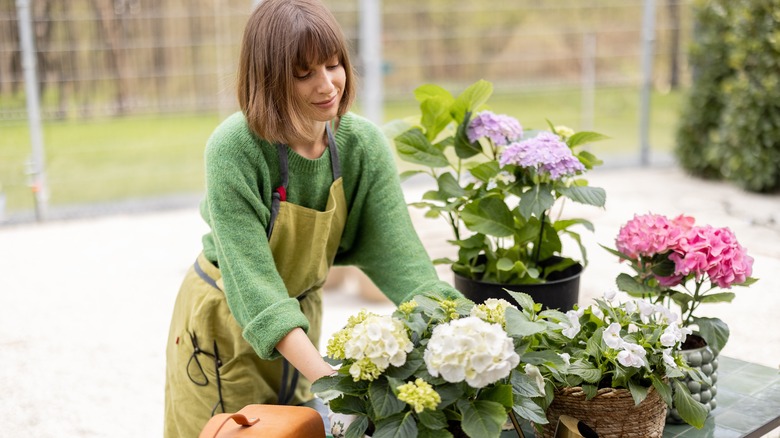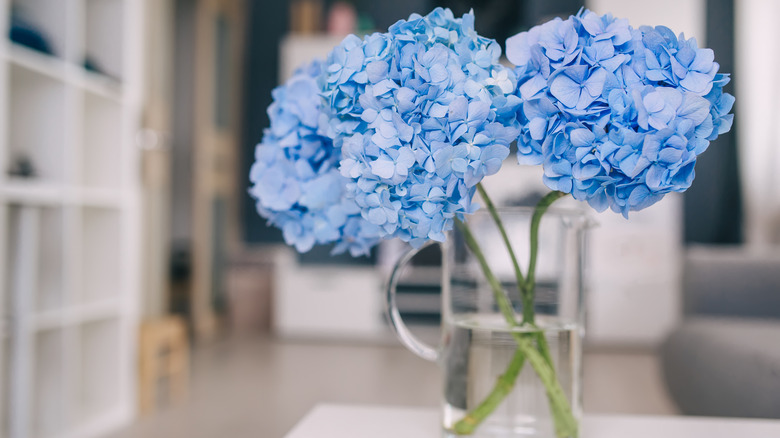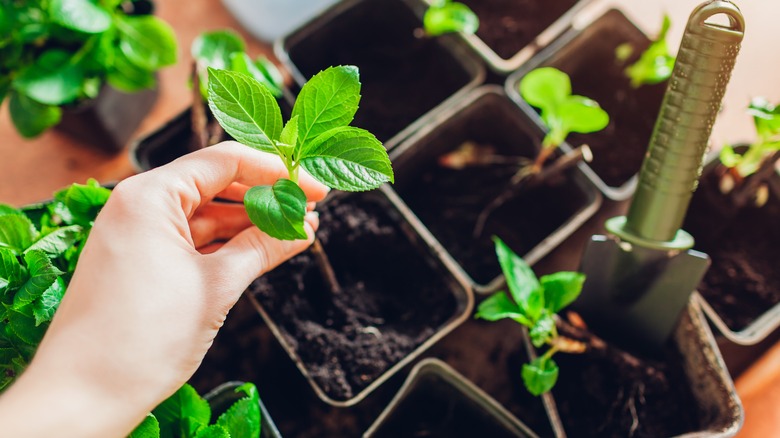Water Vs Soil Propagation: Which Method Is Best For Hydrangeas?
Hydrangeas are lovely woody shrubs that will brighten up those semi-shaded spots in your garden. They also make stunning cut flowers and will last for five to nine days in a vase indoors. If you have some hydrangeas growing in your garden or you've spotted a gorgeous variety in a friend's garden, you'll find that they are also quite easy to propagate from cuttings. To propagate these plants like a pro though, you'll want to make sure you are using soil rather than water.
Propagating plants from cuttings is known as vegetative reproduction. It will produce new plants that are almost identical to the original parent plant. Vegetative propagation is a reliable way to reproduce new plants from the ones you already have and can be a very rewarding pastime for both new and experienced gardeners.
Propagating in water has become a popular way for houseplant enthusiasts to add to their collection and this method can work well for many indoor plants with soft stems. But you'll find that it doesn't always produce good results for garden plants. As hydrangeas are woody shrubs, propagating them in soil from fresh spring growth is a much better way to produce new plants. Just take care when you're working with hydrangeas because they're toxic to both humans and pets. So make sure you keep them well away from your little ones and your furry friends.
Will hydrangeas root in water?
Trying to propagate your hydrangeas in water can be a bit of a hit or miss exercise, unlike other indoor plants that can grow in water indefinitely. If you choose soft stems from spring growth, you might get some success with rooting your cuttings in water. But if you use woodier stems, chances are that you won't end up with any root growth at all.
Even if you do have some success with your hydrangea cuttings developing roots in water, you're going to face a further challenge when you then transplant these cuttings into soil. There's quite a bit of difference between water roots and soil roots. Water roots are quite delicate and have more root hairs which helps them take in oxygen from the water. On the other hand, soil roots are much sturdier, but take longer to become established.
When you transplant propagated cuttings from water to soil, your little cuttings can suffer from transplant shock because you're moving them from one type of environment to a completely different one. The water roots can be easily damaged and may likely not survive for long in the soil. Therefore, the cutting has to produce new roots in the soil for the plant to grow and flourish.
Why it's better to propagate your hydrangeas in soil
While water propagation is now a popular trend, people have been propagating plants in soil for centuries and this method is certainly preferred if you want to successfully grow new hydrangeas. Cuttings taken in spring or early summer from new growth that hasn't yet produced flowers will give you the best results. For your growing medium, choose a mixture of sand and vermiculite or perlite. You want to take cuttings that are at least 5 to 6 inches long with leaf nodes at the base. Remove the bottom leaves and only keep two to three leaves at the top. If the leaves are large, cut them in half to limit transpiration.
For the best results, dip the base of your cuttings in rooting hormone before putting them in the soil. Use a pencil or dibber to make a hole in the soil before inserting the cuttings. This stops the rooting hormone from being rubbed off as you push the cuttings into the soil. To keep your cuttings hydrated, place a plant cloche or plastic bag over them. This will maintain moisture so you won't need to water them as often. Remove the cloche once you start to see some new growth. Continue to water your new plants to keep them hydrated while they produce more roots and new growth.


